The African Pygmy Kingfisher, found near Needles Lodge, is a vibrant bird with electric blue, orange, and purple feathers. Despite its vivid colors, it blends into dense foliage. A skilled hunter, it catches insects with precision. Males perform aerial dances during breeding season. Adaptable and solitary, it nests in riverbanks or termite mounds. Though not endangered, habitat loss is a concern. Spotting this bird at Needles Lodge is a special highlight.
The Thunderous Voice of the Bush: Meet the Southern Ground Hornbill
Discover the biology, behaviour, and conservation of the Southern Ground Hornbill in Kruger National Park. Learn how guests at Needles Lodge can help protect this iconic bird.
Imagine sitting quietly on the deck at Needles Lodge, coffee in hand, as the sun begins to paint Marloth Park in warm gold. Then suddenly — a booming, reverberating oomph oomph echoes through the trees. No, it’s not distant thunder. It’s the Southern Ground Hornbill, calling across the bush in a voice as deep as the wilderness itself.
Majestic, mysterious, and surprisingly social, this iconic bird of Kruger National Park is more than just a powerful vocal presence. It’s a keystone species, playing an essential role in the ecosystem — and a species in serious danger of disappearing.
In this post, we take a closer look at the biology, habits, and fascinating behaviour of the Southern Ground Hornbill, and explain how conservationists — and even lodge guests — are helping to secure its future.
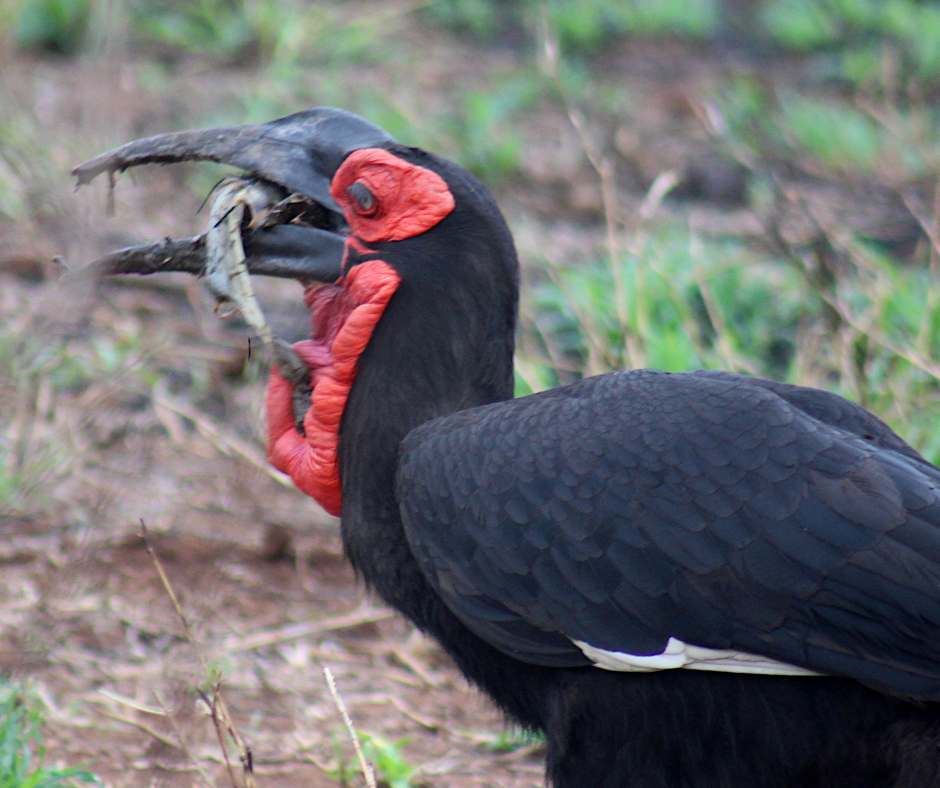
A Bird Like No Other: What Makes the Ground Hornbill Unique
The Southern Ground Hornbill (Bucorvus leadbeateri) is the largest hornbill species in the world, and quite unlike its aerial cousins. Instead of flitting through trees, this bird walks with purpose, covering kilometres of open grassland and savannah on foot each day.
Easily recognised by its coal-black feathers and vivid red facial skin (males have fully red throats; females sport a touch of blue), this bird cuts an unmistakable figure. Its powerful bill is used not just for feeding, but for digging, probing, and even playing.
And then there’s that voice — a deep, drum-like boom that carries for several kilometres and forms the backbone of the hornbill’s territory and social cohesion.
For bird lovers visiting the bush, spotting one of these giants is a highlight — and if you’re lucky, you might even hear their haunting duet from Needles Lodge itself, particularly in the early morning or just after sunset.
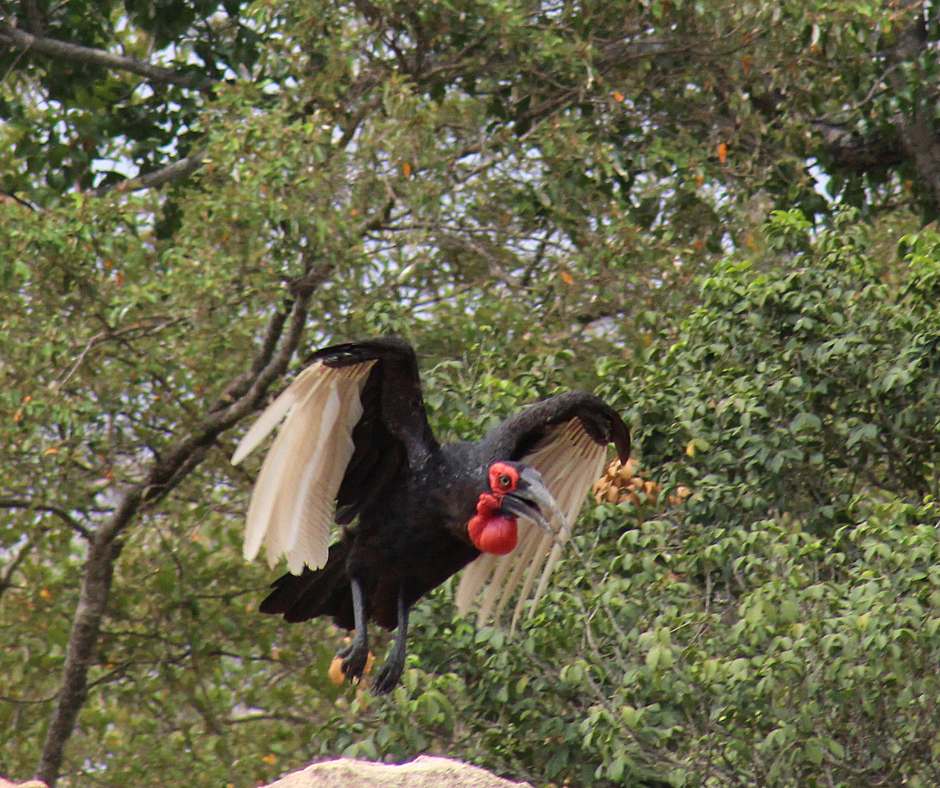
Family First: Breeding and Group Life
Ground hornbills live in complex cooperative family groups, usually consisting of a dominant breeding pair and several helper birds (often previous offspring). They’re fiercely territorial, defending large ranges of up to 100 square kilometres — no small feat when most of it is covered on foot!
One of the most astonishing facts? They are slow breeders, producing just one chick every 9 years on average in the wild. They nest in large tree cavities or rocky crevices, and the female will typically lay two eggs, but only one chick usually survives — the first to hatch.
This slow reproductive rate is one of the reasons they’re in trouble. If a nesting tree is lost, or a chick fails to fledge, it can take nearly a decade to try again.
For a fascinating look at the work being done to support their reproduction and wild release, visit the APNR Ground Hornbill Project — a leading voice in saving this remarkable species.
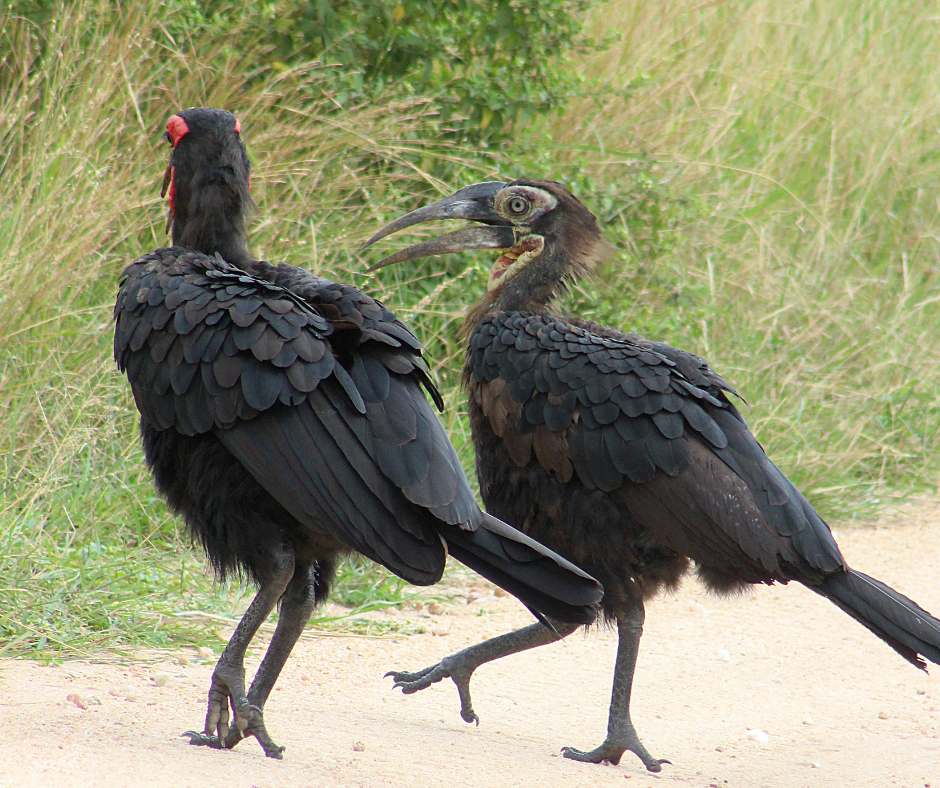
Diet, Territory and Daily Routine
As terrestrial foragers, ground hornbills spend most of their day strolling the bush, eyes scanning the ground for movement. Their diet is wonderfully varied — snakes, lizards, insects, frogs, small mammals, and even other birds are all on the menu.
They use their formidable beaks to dig, crush and probe, often working together to flush out prey. Their intelligence is on display during hunting, with coordinated movements and communication that hint at remarkably complex social structure.
Territory is central to their lives — so much so that hornbills are known to attack their own reflection in lodge windows, mistaking it for an intruder. Guests at Needles Lodge have occasionally witnessed this odd behaviour firsthand!
Conservation Concerns: Why Ground Hornbills Are Endangered
Despite their strong presence and ancient lineage, ground hornbills are in trouble. Their population in South Africa has declined by more than 65% over the last century, and they are now listed as Endangered by the IUCN.
Key threats include:
- Habitat loss from agriculture and deforestation
- Persecution (mistaken beliefs about bad omens)
- Electrocution on power lines
- Loss of nesting sites and incredibly slow breeding rates
Conservationists, including those at SANParks and the APNR Project, are hard at work locating and protecting nesting trees, hand-rearing and releasing second chicks, and involving local communities through education and folklore-friendly outreach.
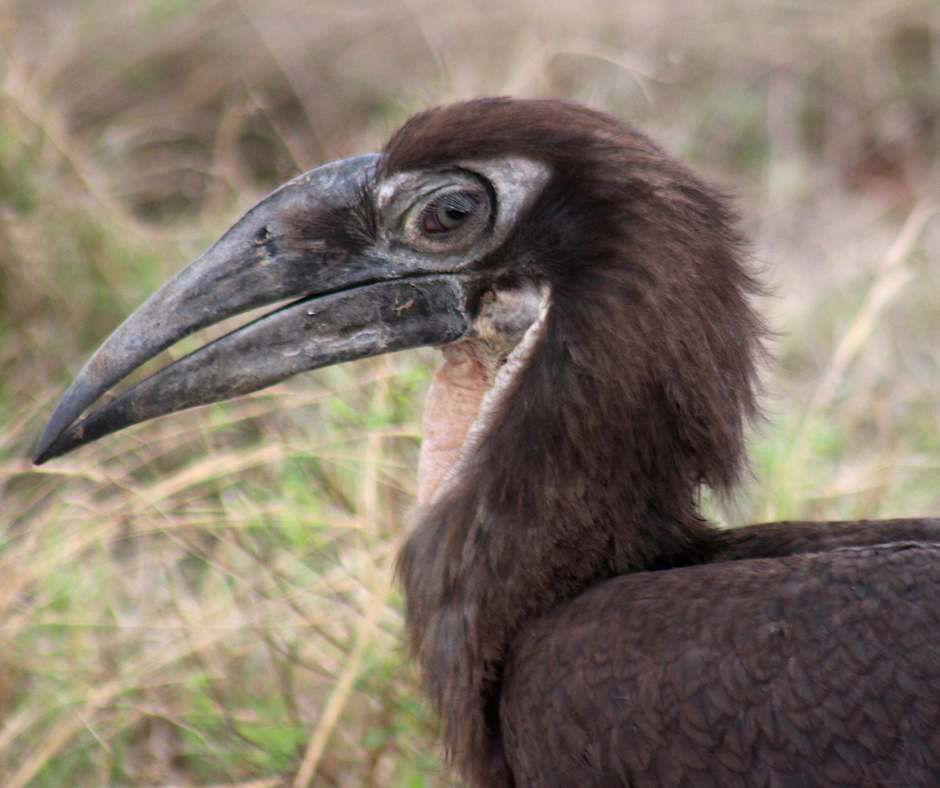
What You Can Do to Help – Even on Holiday
You don’t need to be a scientist to help save the ground hornbill. As a guest at Needles Lodge, there are small but meaningful ways to contribute:
🪶 Report Sightings – If you spot a ground hornbill during a game drive or in Marloth Park, take note of location and behaviour. Sightings help conservationists monitor populations.
🌳 Support Eco-Tourism – By choosing lodges like Needles that support responsible tourism, you’re already helping fund habitat protection and awareness.
🎓 Learn & Share – Join a guided birding walk or attend a lodge talk on Kruger’s birds. The more we understand and admire these creatures, the more likely we are to protect them. You can start with our guide to Birding in Kruger.
💰 Donate to Conservation – Projects like the Ground Hornbill Project rely on private support to continue their fieldwork, research, and release programmes.

Final Thoughts: Listening to the Voice of the Wild
The deep boom of the ground hornbill is not just a sound — it’s a statement. A call across generations, echoing from ancient landscapes, reminding us that the wild speaks in more than whispers.
At Needles Lodge, we are privileged to live among such wonders. We invite our guests not just to observe, but to connect— with the bush, its rhythms, and the creatures who call it home.
Next time you hear the hornbill’s thunderous call rolling through the thornveld, pause. That’s the voice of Africa, telling a story worth saving.
Further Reading
Discover the aardwolf, a unique hyena cousin residing in southern and eastern Africa. This enigmatic creature's insectivorous diet, solitary lifestyle, and intriguing behaviors make it a fascinating and misunderstood member of the animal kingdom. Explore its remarkable adaptations and essential role in maintaining ecological balance, shedding light on the significance of conserving this captivating species.
Have you ever wondered if Woodpeckers get headaches? An interesting question indeed. Most of us who have been lucky enough to visit the bushveld have seen these beautiful birds hammering their beaks against trees.

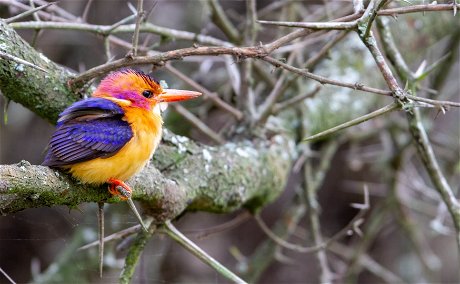


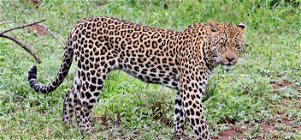
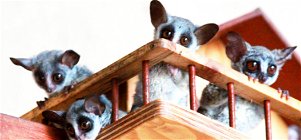
Share This Post